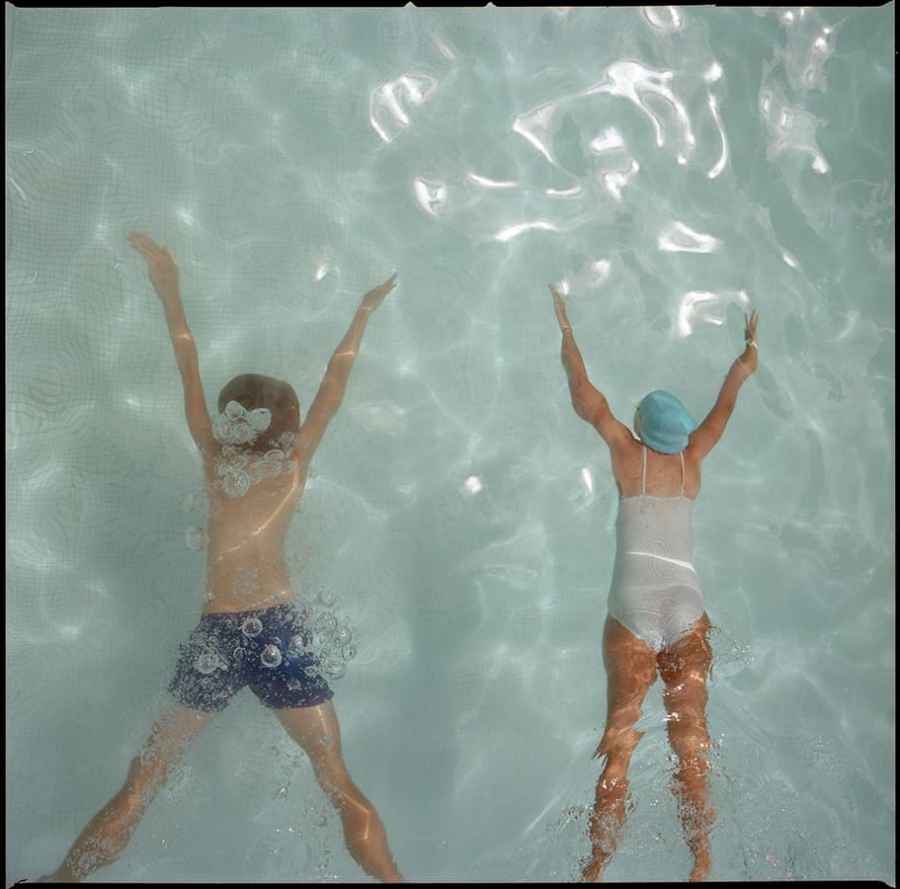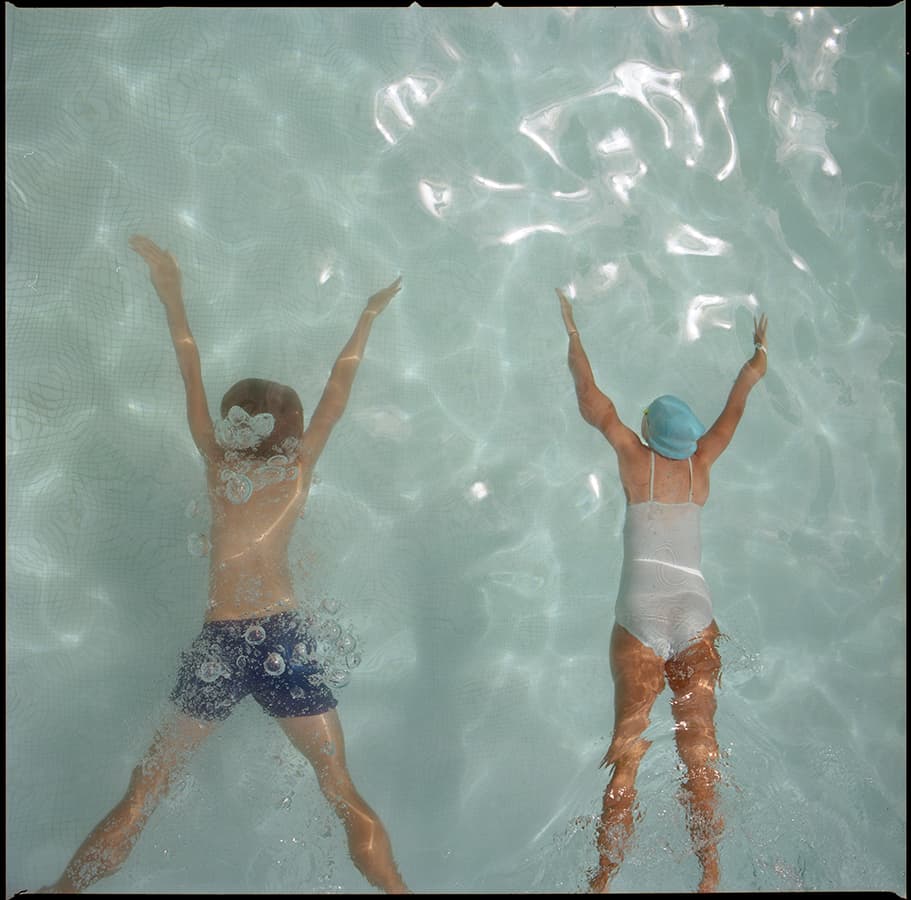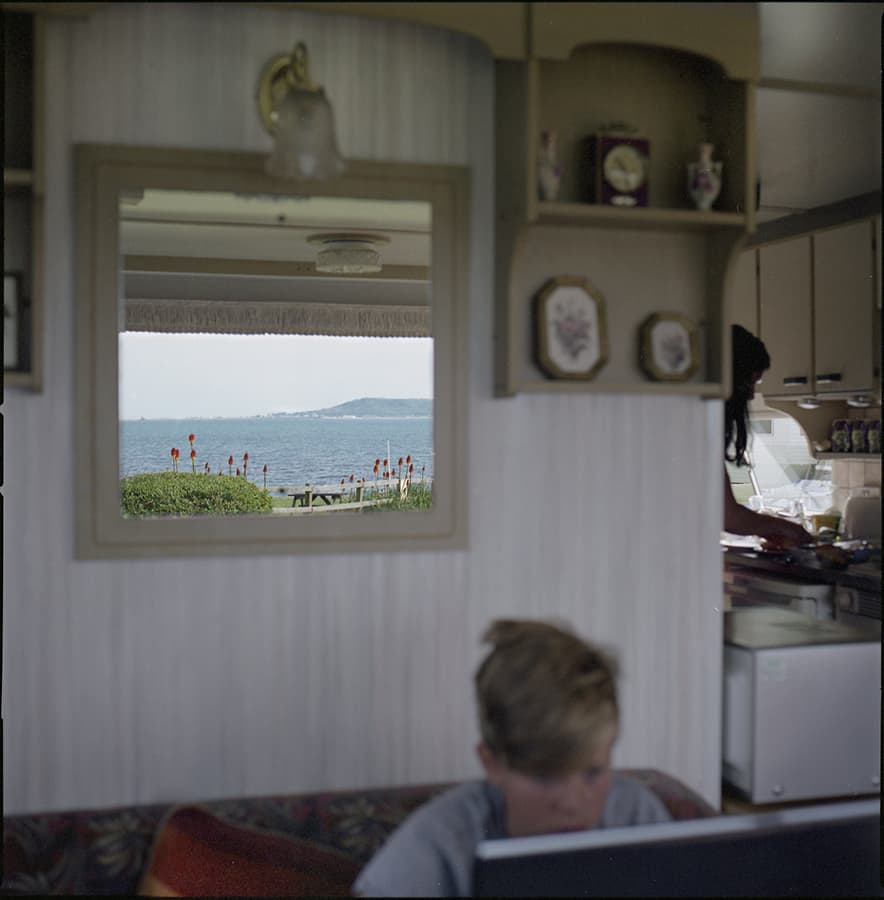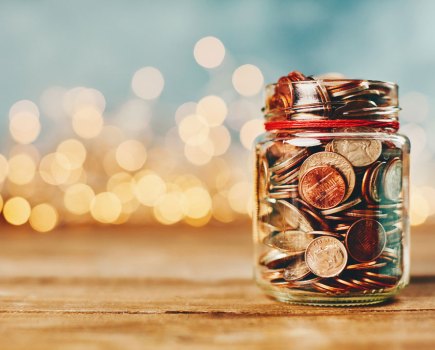What’s the point in recording something that isn’t good, asks Steve Jackson as he explains to Damien Demolder why he likes the more selective process of shooting with film
Steve Jackson likes his pictures to look different. And good. He wants them to stand out from the crowd, and not just be like those everyone else is taking. It’s a great ideal, and probably one many of us share. There are photographers of course who are happy to make pictures that look just like ones they have seen before, and are delighted when they manage it, and those too who just like to take pictures no matter what they end up like. But that’s not Steve.

The problem is though is that Steve says he’s a lazy photographer and doesn’t want to work harder than he has to, so he wants his images to look different without too much effort. And that’s one of the reasons he uses film.
‘My current task is making Hertfordshire look different. I want to make it look a way no one else can – because I’m shooting my vision of the place. No one else has exactly the same ideas so some people might not recognise my view of the place.
I love going to far-flung destinations and exploring, but for the past two years I haven’t visited anywhere, so I’ve been going out walking locally and taking pictures of the things I see. I’m extremely lucky that my two passions, photography and walking, can be done at the same time – unlike swimming and knitting.

‘Of course I take lots of pictures so some of mine do look the same as other people’s, but my favourites are the ones that don’t. They are a bit different. Film helps me do that in a way that doesn’t require me to think creatively. I can load a roll of expired film and I might get a load of rubbish back, or I might get a picture that stands out.
The film can create the look on its own, and I don’t have to do anything other than search for a good subject and shoot it well. Finding a good scene is half the battle, and it’s what I like most. I like to find something to shoot when it seems the area is very limited. There isn’t very much around where I live in Buntingford, and the countryside is quite bland most of the time.

I can walk 20 miles and not see anything that makes it worth getting the camera out, but if you walked that distance in the Lake District, Cornwall or Wales, there’d be loads to shoot. So I have to try a bit harder.
‘I’m trying to compile images for a book at the moment and decided that I wouldn’t include any double exposures as they don’t give a true representation of a place – but I can’t stop myself because I enjoy them so much.
‘The title for my book is Hertfordshire In Colour, because the way I’m shooting and processing is very colourful. You mightn’t associate Hertfordshire with lots of colour, but the place is bursting with it in spring. During the winter though it’s very brown, so I’m trying to inject colour using lighting and techniques like cross processing.

Steve likes to make his pictures look different, and double exposures are just one of his techniques for doing so. He also works with striking compositions and bold colour
‘As I walk so much I’ve exhausted every footpath in my area, and I have to go ten miles before there’s a chance of seeing anything new. But as things change so often, I’ve found that places I had got totally bored of during the pandemic now look really different. The book is inspiring my photography, but I always take my Hasselblad when I go for a walk anyway. I take a tripod too, even though I hate it. A tripod hanging off you really can spoil a nice walk.
‘Yesterday I walked 15 miles and didn’t take a single shot. I’m never “not bothered” when I don’t get to shoot anything on a walk, but it’s actually okay. A friend of mine went to a National Park in America for a two-week trip of a lifetime and found fires had made the air too hazy to see any of the famous views.
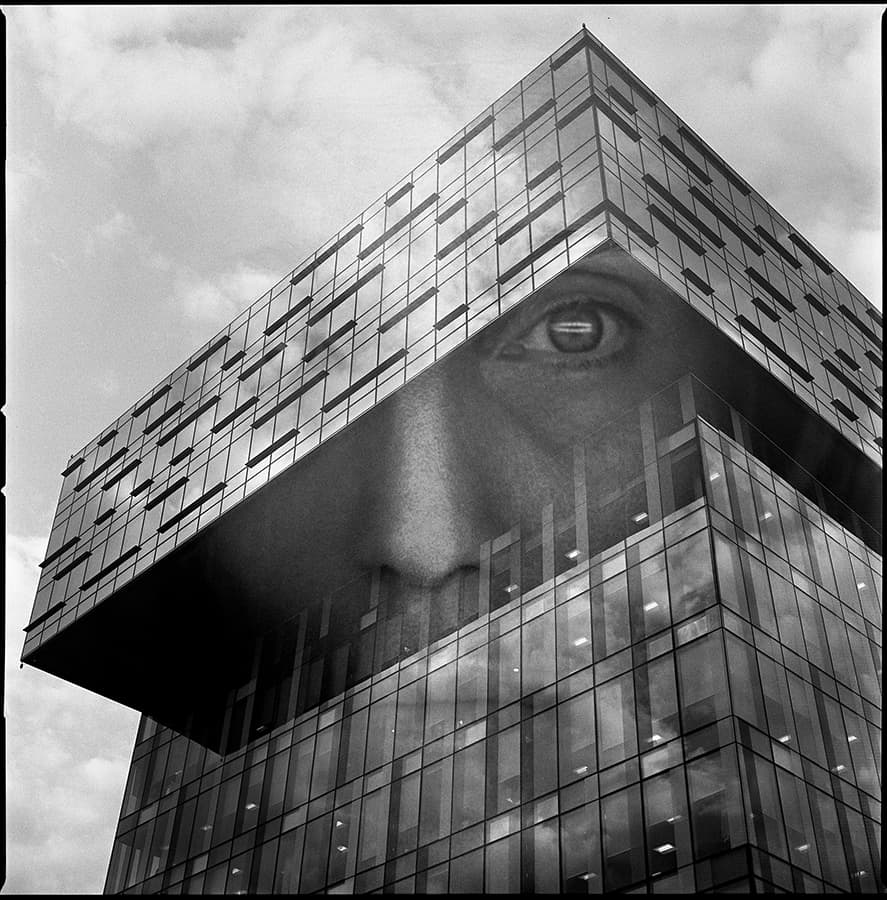
He was really disappointed with the pictures he came back with. I just put on a pair of boots and walk out the door, so it doesn’t matter so much if I don’t get a shot. I’m happy when I find something amazing, but I don’t want to give up photography if I don’t get what I want. I try not to have expectations that are too high. Most of my trips away are family holidays, and I’ll get up early to go out and shoot before the rest of the family gets up.’
Origins
‘I studied photography A Level at school and had the idea that I wouldn’t mind being a Magnum photographer. I had the cheapest Minolta SLR available at the time – I had no one to advise me, so just got what I could afford. I went out with my camera in London to shoot street and discovered that I didn’t really enjoy it.

It was hard work, and good street photography is a lot more difficult than I expected. I had shot a roll of film and remember being quite disappointed when I saw the results. Funnily enough though, during the pandemic I dug them out of the loft and realised that some of those shots were alright.
‘After that initial trial of street photography I concentrated on just shooting the things close to where I lived. I got a job as a photographer’s assistant for a while but when that studio closed down I moved into IT and now install AV equipment. For about 15 years I didn’t touch a camera, until we had kids and I wanted to document them growing up.
I bought a Fujifilm bridge camera and found I loved using it, so upgraded to a Nikon DSLR. I really enjoyed what that could do, but found myself getting into really difficult and annoying habits. Because I had the ability to take thousands of pictures, I did, and would get about one good one in a thousand – which were terrible odds.

Fortunately Steve’s children like being in his pictures – most of the time. And they make great models for both natural and set-up shots
‘To look through so many rubbish photos deciding which one to edit just bored me, and I knew something was wrong. I eventually bought a lovely Nikon 35Ti point-and-shoot compact film camera with beautiful dials on the top. I really loved shooting and making sure the picture was going to be a good one, and slowly but surely came to really appreciate film.
I went on to get a Bronica ETRSi, which gave me decent-sized images I could scan and get great quality from. Eventually I managed to buy the camera I’d lusted over – a Hasselblad 501CM. I’ve been shooting with it for ten years now and absolutely love everything about it. I don’t want anything more from a camera.
It does what I want it to – which is nothing. It would be nice to have a faster shutter speed than 1/500sec on occasions, but when I have limitations I become more creative as I have to get over them. If a camera can do everything I get a bit blown away as I can take the scene a hundred different ways.
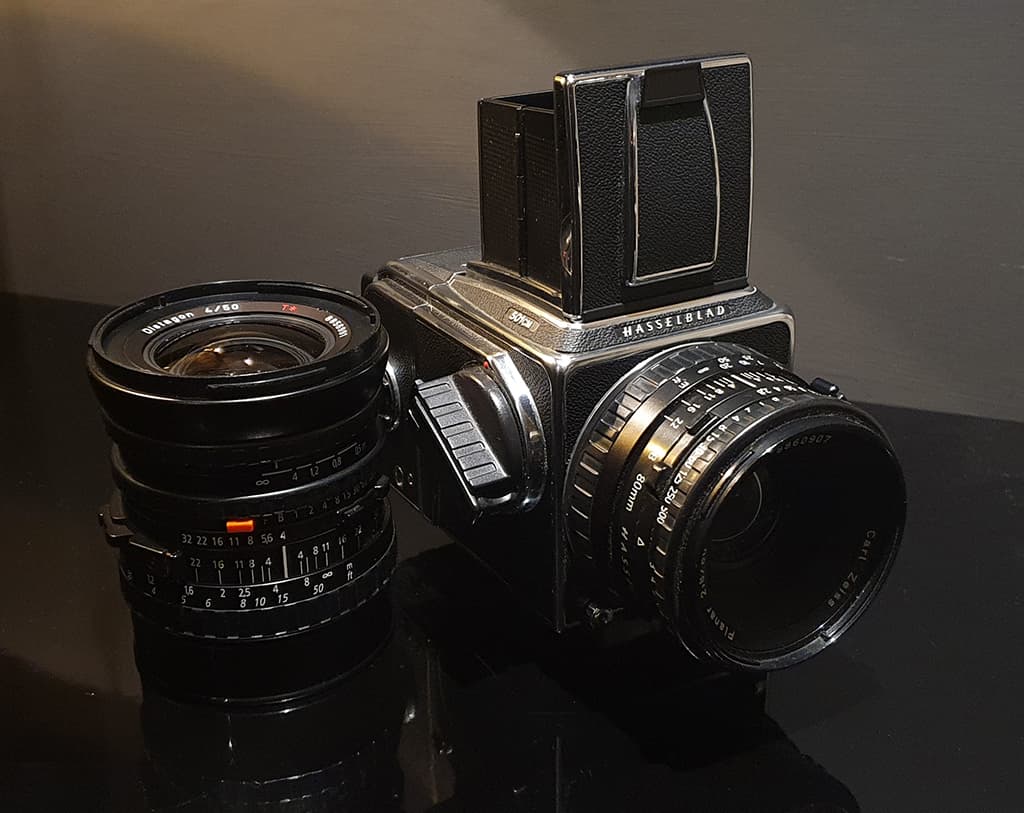
‘My major influences are movies more than anything else – especially films I watched as a kid. There are a few films I couldn’t stop going to see at the cinema. Dune was one of those, as was Desperately Seeking Susan, The Last Picture Show, Psycho and the new one, The Lighthouse. I’m always looking at the cinematography, which can make it hard to actually enjoy the movie the way we’re supposed to.’
I like the wait
‘One of the things I like about film is that it isn’t instant. I like the wait, and then having almost the same experience as finding the scene when you see the negatives and scan them. Film photography feels much more like craft to me. Because you can’t get that instant feedback
I look harder at the viewfinder and ask myself “Do I want this photo? Is this picture going to be cool?” What’s the point of recording something that isn’t good? So that makes me a lot more selective.
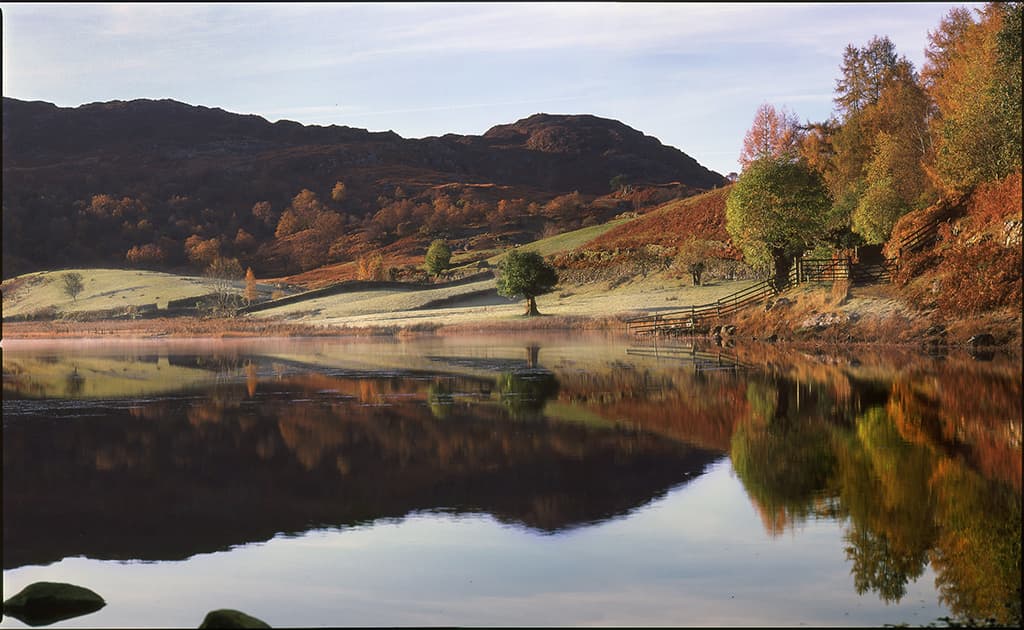
Always looking for something different, Steve makes panoramic stitches from two frames, and also looks out for abstract shots with his Hasselblad
That can also hinder my spontaneity if I spend so long contemplating the shot that the moment has passed – but over time I have learnt to
trust my instincts, and now, strangely enough, I rarely think about what I’m shooting. I’ve taken so many pictures with the Hasselblad now that the finger on the shutter moves without me really thinking about it – I know when the shot is going to be good.
‘Digital photography is an excellent tool for learning and for instantly seeing the results of experiments – to see if things work. With digital photography you have the chance to shoot it again. ‘I probably wouldn’t be shooting film now had I not enjoyed photography when I shot digitally earlier, and although I got some good images I didn’t enjoy the process as much.’

Double meanings
‘I use double exposures to make my pictures of places look a little bit different. It’s a simple thing to do that has a big effect. The Hasselblad isn’t designed to do it and it doesn’t have a dedicated button, but my Nikon F5 does and just makes it very easy. With 120 film it’s too difficult to shoot the roll, wind it back and reload it – as you can with 35mm film – so you have to shoot the two exposures one after the other.
With the Hasselblad I take the shot, take the back off, cock the shutter and then reattach the back for the next exposure. Sometimes I shoot the same subject from lots of different angles or perspectives on the same frame. It can be hard to stop myself from cocking the shutter instinctively.
‘The square format in a flat landscape can be hard to fill, so shooting a mirrored image can work well. I shoot with the camera on one side and flip it over to the other side to shoot it again so the sky and the land areas cover each other. It’s hard to shoot with the camera upside down with the waist-level finder, so shooting with the camera on its side makes life easier.
It’s a simple way to fit rectangular scenes into a square frame, and you can use the marking on the ground glass screen to make sure you know where the mirror line will be. Sometimes too I shoot a rectangular scene using two square pictures stitched together to create an oblong final picture.
I used to only use one lens – the 80mm – and found that sometimes it just wasn’t wide enough for the scene. Stitching a few images together allows me to get a wider view. I don’t do these much any more as they take a bit of time. I love working without any editing at all. I will still remove fluff and dust, but I don’t want to have to do anything else.’

Steve likes to experiment with different films as well as out-of-date rolls for the effects they can bring
Back room process
‘The developing and processing is just as important to my photography as actually taking the pictures in the first place. After a few bad experiences with local labs I now process my own film. I used to get them done by a great lab but it went out of business, so I decided to invest in the kit and do it myself.
I shoot with an adapted “sunny 16” rule and am flexible about how I develop the film according to how I have shot it. Sometimes that can depend on the conditions in which I shot what I expect to be the best shot on the roll, but I also consider how many other rolls have been through the chemicals.
‘I use a simple Paterson tank that takes two rolls of 120 or three 35mm rolls, and I like Tetenal chemistry as it’s consistent, it keeps really well and it goes a long way before it gets exhausted. For black & white I love Ilford Perceptol as it’s a slower developer and timing isn’t so critical.
I use an Epson V500 for scanning – it must have scanned tens of thousands of slides and is still going strong.
I hired a Hasselblad scanner and managed to get about 200 images in a day, but found the difference between those results and those from the V500 was tiny, so I’ve stuck with the Epson. The Hasselblad could render underexposed film better, but that was the only obvious difference.
The V500 doesn’t do 35mm film justice so I use a copy set-up for that with a digital camera. Epson has its own colour and contrast signature that I really like, and it makes scanning quick and easy. I want great photos without any extra work involved – straight out of the tin.
‘I don’t have a darkroom, but I do have two medium format enlargers, all the trays, a print washer and loads of paper. I bought it all from one listing on eBay, but just haven’t got room to set it up. I’ve been looking at the darkroom tent that Ilford has just brought out and reckon I could have it set up, use it and take it down again before my wife gets home.’
Film and lenses
‘Perceptol with Tri-X is incredible – you can shoot at ISO 1600 and end up with no grain. Kodak Portra is able to capture so much shadow detail I can create really low-contrast images that just wouldn’t be possible with a digital camera. Provia, on the other hand, creates a much more contrasty image with lots of impact and colour. I struggle with Fuji Velvia. Pan F is unbeatable in bright sunshine as it really holds on to the highlights. And I love the tones.

‘I leave the film rebate in the shot when I scan, and it makes me really happy when I’ve made the square frame work. Sometimes I’d prefer a bit of a crop to suit the subject, but tend not to make them. The Hasselblad feels natural to me now, and is a part of me. I don’t have to think about it when I’m using it, like a craftsman with his favourite hammer and chisel.
And I see in 80mm – I see with the same angle of view as a standard lens, so it feels natural to me. When I tried a 40mm for the Hasselblad it needed a whole new set of skills. Scenes that weren’t of any use on the 80mm were great on 40mm.’
Tips for new film photographers
‘Don’t jump in at the deep end. I found the progression from smaller formats to larger formats worked well. You won’t mind cocking up a roll of 35mm but you will if it’s medium format or 5x4in film. It will still happen whatever format you use, but by practising with smaller formats you will do all your learning when it doesn’t cost so much.
It can be disappointing to waste time, effort and money, so just try to avoid it. And learn on one lens. Learn your camera and master it. Going out to buy a new one won’t improve your photography.’
Further reading
Simon Lipman on why he’s chosen film over digital
Kai Wong on his passion for film photography
Why this film photographer is happy to keep the ‘meaning’ of his images fluid

